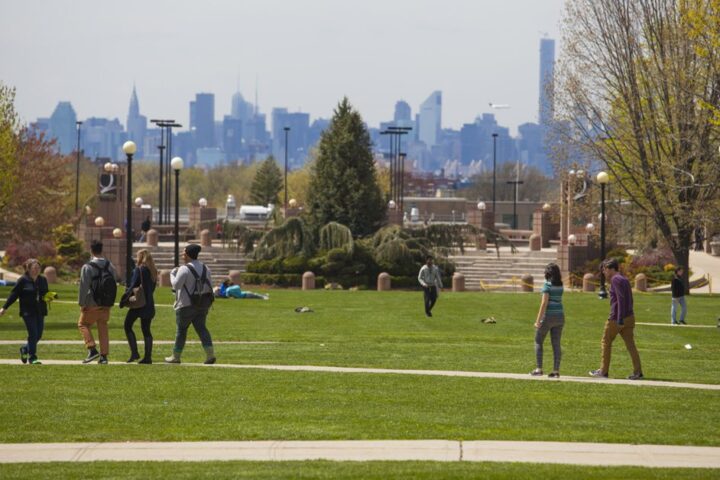Due to eight months of mostly-online courses, a number of Queens College campus facilities have been struggling to fulfill their intended roles because there is only a small fraction of students that can utilize them. Among these facilities is the Godwin-Ternbach Museum on campus, a place where the continuation of online studies has prompted the center’s first-ever virtual exhibit, which opened on the museum’s website on September 29th.
The exhibit, titled “Human Nature,” includes a carefully-ordered progression of portraits in a fashion remarkably similar to that of an in-person gallery. The display opens with a cluster of pieces under the title “Realism,” which prefaces the rest of the show by introducing the art of portraiture in its purest observational form. The pieces in this section span a great deal of years and media, providing a basis for some of the more unconventional portraits to follow.
In the sections titled “The Timeless Gaze” and “The Male Gaze,” observational paintings and sculptures are displayed to further portray the desire of the artist to understand humanity. The former incorporates terra cotta sculptures dating back to at least the fifth century B.C., while the latter includes more recent works detailing the muses of various artists. Despite the vast difference between the dates of creation of the pieces, the longing to understand the subject is evident in each, a feeling that the exhibition describes as “an impossible yearning” which prompts the artist to mimic the human form.
In the more contemporary section, “Pop Art,” the viewer observes the active role of portraiture in defining rather than simply observing. The work in this section includes pieces by Andy Warhol and Roy Lichtenstein, as well as a haunting two-panel painting by Roger Shimomura, which is titled “Yellow Rat Bastard (How to Tell the Difference Between Chinese and Japanese).” Each panel bursts with a number of crowded faces, marking a transition of the portrait artist’s role from observer to that of defender and definer of cultures. Similar strategies are implemented in a number of later sections. Pieces from “Satire and Caricature” and “The Honorific Portrait” show how portrait artists have the ability to take on a politically and socially relevant role in either criticizing, mocking, or exalting their subject. Meanwhile, work from “Describing the Spirit” and “The Human Condition” follow by displaying how an artist may manipulate the subjects of their work to appeal to worshippers or to instill feelings of outrage and injustice.
In “Illustrating the Dream,” the subjects of the portraits float between reality and possibility, providing the most integral turning point from the observational start of the exhibition to some of the more abstract pieces at the end. Particularly in the heavy-handed reproduction of Georges Rouault’s “Tête de Pierrot (Head of a Clown),” the viewer observes the departure from the traditional portrayal of the human into the realm of vague possibility that can be seen in some of the exhibit’s later pieces. This transition especially enables the viewer to embrace the pieces in the final section, “Self Portraits and Alter Egos,” which includes work that spans from the highly realistic “William Hogarth Painting the Comic Muse” to the somewhat frightening and distorted etching by the artist Paul Klee, titled “The Comedian.” This group of pieces draws the subject of the portrait inward for the purpose of self-definition. A number of the other pieces in the self-portrait section also refer directly to art as something very clearly tied to the maker’s identity. A sample of this is the gracefully sketched etching by Picasso titled “Peintre Travaillant (Painter Working).” In this piece, the painter and his companion are drawn in a bare and complete state of focus on the painter’s work, a portrayal which depicts the very definition of the artist’s being.
In light of current circumstances preventing many from viewing art in a traditional museum setting, this exhibition provided those interested with the opportunity to observe and contemplate an artistic portrayal of the human condition throughout a vast timespan and within various media. The topic holds both current relevance and inspiration for the viewer as they undertake the virtual trek from realism toward unearthing the self through the gradual observation of the human condition.














